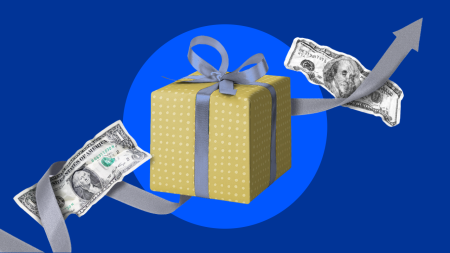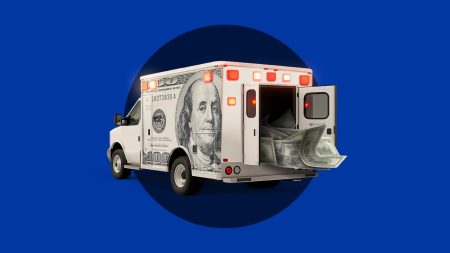When I offered my annual credit card predictions around this time last year, I speculated that regulatory issues would dominate the credit card landscape in 2025. I wrote:
“The biggest credit card industry development of 2024 occurred in February when Capital One announced an agreement to acquire Discover for $35 billion in stock. The biggest development of 2025 could be [dramatic pause…] Capital One actually acquiring Discover. You see, the transaction hasn’t closed yet because of regulatory hurdles.”
Well, I wasn’t wrong. But the closing of the deal happened quietly and without much real change (so far) for consumers. What really shook up 2025 for consumers — in good ways and bad — was luxury credit cards’ race to outdo one another in perks and, unfortunately, fees as well.
Let’s take a walk down memory lane and take stock what happened with credit cards in 2025.
Have a question about credit cards? E-mail me at [email protected] and I’d be happy to help.
Luxury credit cards boomed in 2025
This was the year of the luxury credit card. Cardholders of the Chase Sapphire Reserve® and American Express Platinum Card® received more perks in return for higher annual fees (now $795 and $895, up from $550 and $695, respectively). Plus, Citi re-entered the premium card landscape with the introduction of the Citi Strata Elite℠ Card (annual fee: $595).
If you’re a high-end consumer, card issuers have fawned all over you this year. Thanks in large part to competition for cardholders with high incomes and high credit scores (the target audience for these premium cards), credit card originations are growing in 2025 after two straight years of declines, according to Equifax.
With the higher annual fees came loads of new statement credit opportunities, elite status and some eye-popping welcome offers designed to lure new cardholders into the fold. And, not surprisingly, this focus on high-end cardholders mirrors the K-shaped conditions apparent in other areas of the current economy.
The growing extremes of the K-shaped economy
While a two-track society is hardly a new trend, the so-called K-shaped economy hit new levels in 2025. The basic concept is that the rich get richer (the upper part of the “K” extending up and to the right over time) and the poor get poorer (the lower part of the “K” moving down and to the right).
The idea of a K-shaped economy gained steam during the COVID-19 pandemic and has intensified in the years since. Recently, Moody’s reported that the highest 10% of earners in the U.S. account for 50% of consumer spending, an all-time high in a dataset that goes back to the late 1980s.
The theme is manifesting in numerous ways. Consumer sentiment is depressed, yet the Transportation Security Administration is on track to screen a record number of travelers through U.S. airports this year. Stocks established new record highs at the same time the government shutdown highlighted the food insecurity affecting tens of millions of Americans. Home prices are hitting record highs while many aspiring first-time buyers watch this core component of the American Dream drift further out of their reach. Car prices are also at record highs and yet repossessions are surging.
It all highlights the growing wealth gap in the country and raises questions about how banks and lenders will respond going forward after a 2025 during which they heavily focused on their wealthier clientele. People on the bottom leg of that K need credit too, but will banks increasingly leave them behind?
The Capital One/Discover acquisition
If 2025 was the year of the luxury credit card, it was just as much the year of disappearing regulation.
It largely kicked off with Capital One getting the green light to close the Discover acquisition despite some concerns from regulators when it was announced 15 months earlier. The deal closed in May 2025, but nothing much has changed (yet) regarding specific credit card features or consumer benefits.
Capital One seems to be taking the slow road, acknowledging that it’s going to take considerable time and effort to integrate two large companies. In earnings calls and other forums, Capital One executives have expressed excitement about complementing their large card issuing business with the Discover network. Although they need to integrate the back-end technology and boost Discover’s international acceptance before switching the majority of their existing credit cards from Visa or Mastercard to Discover.
The debit card switch has been moving faster than the credit card shift, however, and the Wall Street Journal reports that many debit customers are complaining. That may be further justification to slow the potential credit card transition.
Other credit card regulation issues
In my 2025 preview, I detailed two other regulatory issues that I believed could reshape the credit card landscape for you: the temporary 10% credit card rate cap that President Donald Trump floated during the 2024 campaign and the Credit Card Competition Act (CCCA), a bipartisan bill that has been floating around Congress for a few years. The CCCA is essentially a roundabout proposal for merchants to save money on credit card processing (also known as interchange) fees.
A 10% credit card rate cap
This political talking point didn’t move forward at all in 2025. In fact, I can’t find any evidence that President Trump has mentioned the rate cap publicly since his election. The 10% rate cap was formally introduced in the Senate and in the House in early 2025 by a fascinatingly diverse group of co-sponsors (Sen. Bernie Sanders and Rep. Alexandria Ocasio-Cortez, two of the most liberal members of Congress, along with two of the most conservative, Sen. Josh Hawley and Rep. Anna Paulina Luna). I admit I believed the bipartisan support could lead to legislative action, but both bills appear stalled in committee and idled for the foreseeable future.
The good news is that credit card interest rates have declined some as the Federal Reserve has lowered rates over the past few months. Still, the lesson here is to not depend on the government to help you get out of credit card debt.
The Credit Card Competition Act
The CCCA has also garnered an impressive and eclectic collection of co-sponsors from both parties in both chambers of Congress. But it hasn’t moved forward in a meaningful fashion, either. Washington appears as gridlocked as ever, and with various impasses concerning the federal budget, healthcare and more, it doesn’t seem that these financial topics are going to break through the logjam anytime soon.
The idling of the Consumer Financial Protection Bureau isn’t helping to create any urgency around these sorts of issues, either.
Plus, a recently announced settlement of a longstanding interchange fee feud between merchants and the two major card networks, Visa and Mastercard, could push the topic even further to the back burner. The card companies don’t seem to be giving up much in the settlement. Coming to some sort of lip-service agreement could be enough to avoid further scrutiny, at least for a while.
Furthermore, the CCCA’s chief architect (Sen. Dick Durbin) is retiring in 2026.
The summary of all this? Card companies have a lot more breathing room on the regulatory front than they did a year ago. They got through 2025 pretty much unscathed.
What does this mean for you?
The economy is working for some people but not for many others. Credit card debt is a microcosm. Americans have a record amount of credit card debt ($1.23 trillion, according to the New York Fed), yet this burden really only falls on the 46 percent of cardholders who carry debt from month to month, according to Bankrate’s 2025 Credit Card Debt Survey.
The New York Fed’s $1.23 trillion figure represents balances at a moment in time. It doesn’t distinguish between statement balances paid in full (without interest) and true debt which is financed month to month at an average credit card rate of 19.87%. Believe it or not, that’s a slight improvement. November 2025 marked the first time the average credit card rate dipped below 20% since early 2023; the figure peaked at 20.79% in August 2024 (an all-time record). But the small decline hasn’t been enough to save cardholders a meaningful amount of money.
With rates this high, it’s easy to see why 6 in 10 cardholders with debt have been in debt for at least a year, per our annual credit card debt report. It’s a persistent issue, because if you have the average credit card balance ($6,523, according to TransUnion) and you only make minimum payments at the average rate of 19.87%, you’ll be in debt for a whopping 219 months, and you’ll end up paying almost $9,400 in interest.
If you pay your credit cards in full each month — as just over half of cardholders tend to do – then life is great. You don’t owe interest and you receive valuable benefits such as credit card rewards, convenience and buyer protections. But if you’re among the balance carriers, you could be stuck in a mound of debt for a really long time.
If you’re willing to shell out several hundred dollars a year for a credit card that provides airport lounge access and other swanky benefits, odds are that you’re a higher earner who is faring better in today’s economy. That higher income often correlates with other situations that reflect more favorably (a higher credit score, owning a home, having sizable stock holdings and so on). In fact, a recent University of Michigan consumer sentiment survey found that most Americans are feeling down about the economy, but those in the top third of stock ownership are feeling remarkably upbeat.
The bottom line
As the saying goes, credit cards are like power tools — They can be really useful or terribly dangerous, depending on how you use them. And the ratio of cardholders paying interest versus paying in full is roughly half-and-half. For every cardholder who’s benefiting from cash back or travel rewards, there’s someone else at risk of getting trapped in a very expensive debt cycle. This has been the year of the luxury credit card, and also a year in which economic inequality widened considerably.
Why we ask for feedback
Your feedback helps us improve our content and services. It takes less than a minute to
complete.
Your responses are anonymous and will only be used for improving our website.
Help us improve our content
Read the full article here









